
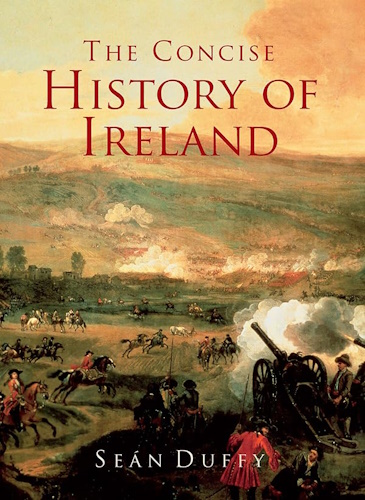
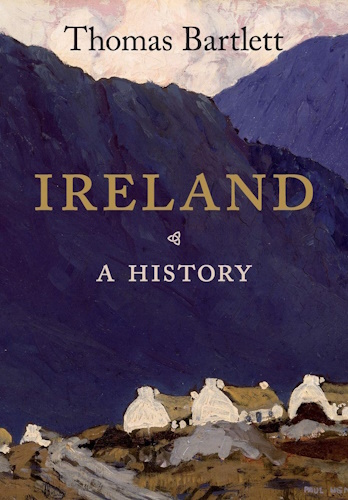
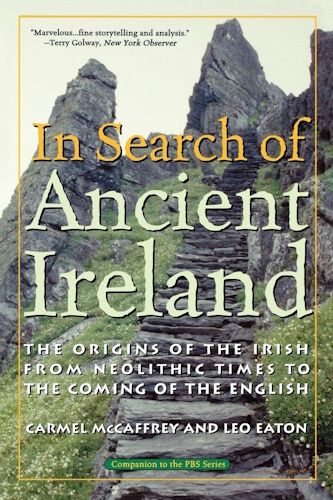


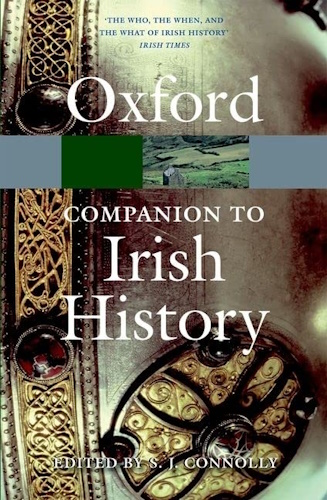
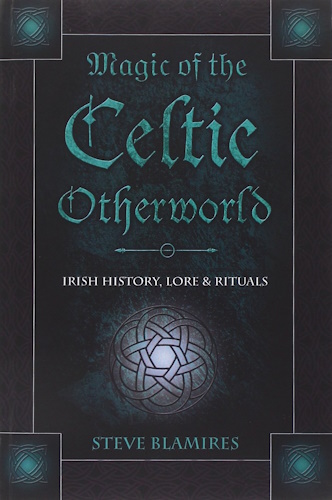
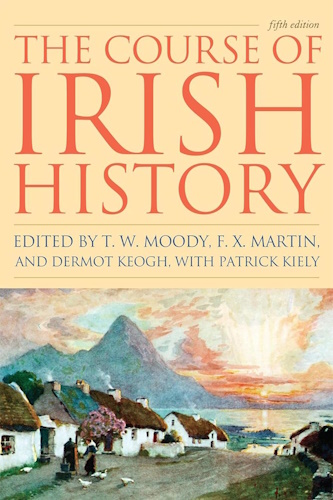
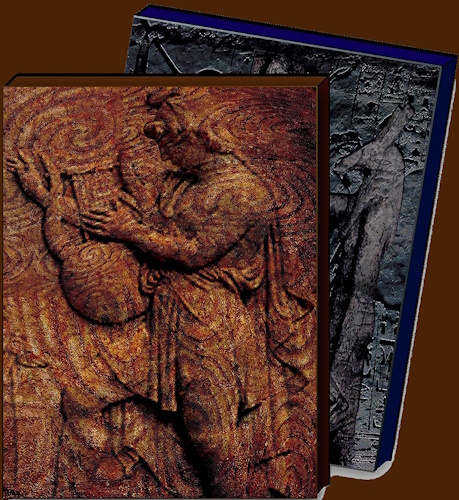
L. A. Waddell
Appendix VI to Volume I
of
The Irish Origins of Civilization
by
Michael Tsarion
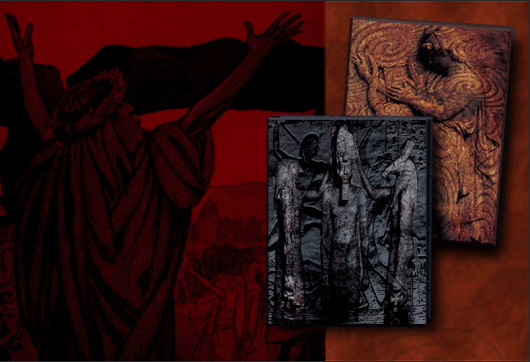
![]()
![]()
L. A. Waddell (Cont'd...)

There was and is an Aryan Race, that is to say, the characteristic modes of speech, termed Aryan, were developed among the blonde long-heads alone - Julian Huxley
Introduction
There can be little doubt that when it comes to the actual facts about European and Near-Eastern civilizations, Professor Waddell's superlative discoveries prove to be of the highest relevance. It is, therefore, outrageous that his name has been largely forgotten.
Personally, I believe his revelations concerning the Aryan empires of the Near-East help us finally identify the mysterious Hyksos nobility, which, after entering Egypt, set up the oppressive dynasty that after its expulsion from the land, gave rise to the so-called Jews and Israelites of Biblical fame. The Hyksos were worshipers of Set, the deity of which we learn a great deal via the works of Beaumont and Waddell. I surmise that their temple at Heliopolis was the center of a cult which, although solar on the surface, was wholly Setian in complexion. The Atonist king Akhenaton was, in my opinion, a pharaoh in service to this sinister all-powerful cult. (Here for more...)
The case for the Hyksos' origins and identity is presented in my Irish Origins of Civilization books.
On this page I present excerpts from the Phoenician Origins of the Britons and Anglo-Saxon. It is in this book that Professor Waddell's work is most akin to that of Comyns Beaumont.
.
Semites?
I found by indisputable inscriptional and other evidence, not Semites as hitherto supposed, but were Aryans in Race, Speech and Script. They were, besides, disclosed to be the lineal blood-ancestors of the Britons and Scot - Waddell
…no Semitic dynasty whatsoever is to be found in Mesopotamia throughout the whole period of recorded history from the rise of Civilization downwards until the Semitic Assyrian period of about 1200 BC. All the dynasties before this period which are alleged by Assyriologist Semitic scholars to be "Semitic" are now disclosed to be purely and unequivocally "Sumerian" or Aryan and Non-Semitic - ibid
In short, as Waddell asserts, those tribes duplicitously referred to as Semites or Shemites, were Sumites, Shumites or Sumerians, and therefore Caucasian.
The name was not used by the Sumerians themselves. Their own name was probably akin to Shinara, meaning "those from Shinar." However, as Anna Wilkes and Beaumont show, this does not refer to Mesopotamia. In the proto-language (Irish) it refers directly to the "old land" or "old country."
A Celtic etymology for Shinar, would be as near, perhaps nearer, the truth. For instance, Shinar might mean in Irish, a tract of an old country, from scan "old," and ar (or ara), "a tract of country" – Anna Wilkes (Ireland: Ur of the Chaldees)
To the Hebraist, but slightly acquainted with the Celtic archaeology and tongues, we can promise, if he gives adequate attention to them, that he will be relieved from much of the idle nonsense diffused by most philologists and grammarians - ibid
In short, Wilkes states that the Sumerians called themselves "Europeans." It is only by way of gross mythmongering that these simple facts have been well and truly obscured.
Waddell's insights are further confirmed when we remember that the Israelites were themselves descended from the Hyksos nobility of Egypt, a group which, again, was White and Western. The Old Testament and other "Judaic" scriptures are not about any Semitic groups at all. They concern the exploits of White races and theirdeities, customs, exploits and travels.
Similarly, the Egyptians - the Children of Ham, Kam or Khem - were also related to the Sumerians, and therefore also White and Western. (Here for more...)
The Predynastic higher culture and art in Egypt, which has been assumed to be indigenously developed, is also seen to be of Sumerian orEarly Aryan origin - L. A. Waddell
Celt?
The term "Celt" or "Kelt" is entirely unknown as the designation of any race or racial element or language in the British Isles, until arbitrarily introduced there a few generations ago...It is, on the contrary, the classic Greek and Latin title of a different race of a totally different physical type from that of the British Isles, and that word was only introduced there by unscientific philologists and ethnologists some decades ago - ibid
The "Celts" or "Kelts" first appear in history, under that name, in the pages of Herodotus (480-408 BC). He calls them "Kelt-oi" and locates them on the continent of Western Europe - ibid
- Note: This is confirmed by recent DNA research into the Irish people. It is now confirmed that the Celts were not original to Ireland, and were relatively late colonists, just as Waddell had previously stated. Do we espy the artifice of mythmongers by any chance??? According to the ancient Greek historian Strabo, the term Celt designated the Scythians, and was used as a general term for West-European races and tribes. Caesar and Strabo both did not place the Celts in Britain or Ireland. The term doesn't appear in British history until 1607, and still doesn't refer to Britain or Ireland, but to inhabitants of France. European groups called "Celts" went by the name Katti, Khatti or Kadi, etc. The term "Celt" was used as a derogatory term for non-Grecian, non-Roman Westerners.
The manner in which the notion of a "Celtic" ancestry for the British, Scots and Irish was insidiously introduced into British literature now becomes evident, and affords a striking example of the inception and growth of a false theory - Waddell
Aryans
With this in mind, we see that Waddell is quite correct to refer to the British and Irish as Aryans. Indeed, the very name Ireland should be rendered Arya-Land, derivations being Aran, Urani, Ireni, Eire and Eri, etc. The Druid priesthood of Ireland being the originalAristocracy. In short, the British were part of the wider Indo-Aryan or Indo-European race. Indeed, the Celts of Europe were, in language and race, also part of this racial family - Mtsar
Phoenicians
...the title "Phoenician," or its dialectic equivalent, was scarcely ever used by themselves - L. A. Waddell
Waddell identifies the Phoenicians with the Gothic-Aryans from the Europe and the Near-East who sailed the Mediterranean and Western seas in search of trading posts and colonies. They were, in effect, the mariners of the Aryan Race, the first of their high-born kind (according to Waddell) to discover and settle the British Isles. It is they who first mined ore in the British Isles, and who established the first coastal shipping ports. These intrepid mariners established the great Phoenician cities of Carthage, Tyre, Byblos and Sidon, etc. They were also the shipwrights and craftsmen later hired by the Jews to design and build the famous Temple of Jerusalem (Solomon). They had strong ties with the Egyptian Amenists and had several temples and mercantile centers along the Nile. This goes for Mediterranean seaports also. They were known as White Syrians, Syria being known as "Kur." (Note also the similarity between the terms Phoenician and Fenian, as in the ancient Irish tribe.) According to Beaumont, the name was given to the great mariners by other nations. They were actually called Arcadians (the word cad in Irish meaning "holy") - Mtsar
Called Arcadians and also Khadians, Khads or Akkads - the "People from the Holy Place" - the Phoenicians were identical to the Aryan Akkadians of Mesopotamia, one of their greatest kings being none other than Sargon, father of Menes, the first pharaoh of Egypt's first dynasty. They were the original Academicians, builders of the sacred centers of learning. The ancient name of Greece, Arcadia, undoubtedly hearkens to their august presence, as does the place-named Akkadia. Their center in Arabia was Ocads, their original homeland being Orcadia in Scotland. No surprise then that the Phoenician inventor of letters (the alphabet) was known to the ancient world as Cadmus - Mtsar
Another appellation was Scuti or Scut, which like the previous indicates their North-Western origin - namely, Orkneys and Shetlands. This term also signifies Scythian ancestry. Scotland is itself named after the Scythian-Egyptian Princess Scota, who lies buried in Ireland. (Ireland was first known as Scota.) Another name for the Phoenicians was Punch or Panch. This may connote the number five, which in turn denotes the Morning Star, Venus, sacred to mariners - Mtsar
They also went by the name Og or Ogians, meaning "giants" or "great ones." By the time of Christianity, the Phoenicians were considered patriarchs of all nations, the fathers of wisdom and elders of all priesthoods. Most of the names denoting them were actually honorary titles, one them being Chaldean or Calneh (see Vol. I). They were the original Chasidim or Hasidim - Mtsar
Another of their branches may have been the mysterious Amorites. Waddell asserts that the Amorites (Mori, Amurru, Muru or Mari) were indeed a seafaring branch of the Phoenicians. Neither the Amorites or Phoenicians were "Semitic" in any sense asserted by mainstream historians. They were pure Aryan - Mtsar
Arrival of Brutus
British history...begins with the arrival of "King Brutus-the-Trojan" and his "Briton" colonists with their wives and families in a great fleet from the Mediterranean about 1103 B.C., and his occupation, colonization and civilization of Albion, which he then is recorded to have called after himself and his Trojan Briton followers "Britain" or "Land of the Brits," after dispossessing a still earlier colony of kindred Britons in Albion - Waddell
The arrival of Brutus was, for Waddell, the first colonization of Britain by the Phoenicians.
Etymologically, the name Brutus can be rendered Bret, Brude, Brutan, Prutus or Parutas, and the Barat race also known as Parats, Pratts, Prets, or Parths, etc. A major tutelary goddess of the Phoencicans was known as Baratana. This is the origin of the land of Britain. Her image remains on British heraldry to this day. She is Lady Britannia, complete with trident, great throne and red cross of Thor. She is identical to the Phoenician-Cretan goddess Britomartis. In this sense is Brutus named after his goddess. He is her child and leader ruling in her name - Mtsar
Arrival of Partholan
This British-Phoenician prince from Cilicia is, moreover, disclosed in his own inscription in Scotland to be the actual historical original of the traditional Partholan "king of the Scots," who, according to the Ancient British Chronicles of Geoffrey and Nennius and the legends of the Irish Scots, came with a fleet of colonists from the Mediterranean and arrived in Erin, after having cruised round the Orkneys (not far distant from the site where this Phoenician monument stands) and colonized and civilized Ireland, about four centuries before the Roman occupation of Britain - Waddell
The syllable Parth is a variation of Barat or Bharat.
Brutus & Partholan
...the cherished old British tradition that Brutus-the-Trojan and his "Britons" hailed from the Mediterranean coast of Asia Minor is in agreement with the fact that King Partholan "the Briton" actually records his native land as being also on the Mediterranean coast of Asia Minor. And this tradition is now confirmed by the discovery that many of the prehistoric engravings and inscriptions on the rocks and monoliths in Britain are of the Trojan type - Waddell
- Note: Journeying Westward about 600 years or so after Brutus, and prior to reaching Ireland, Partholan visited the Orkney Islands, which supports Beaumont's theory concerning the Orkney's being the supreme headquarters of the Phoenicians. Waddell would probably concede that it was certainly a north-western outpost. In any case, it is important to remember that there were at least five major invasions and settlements in ancient Ireland. According to the Mythological Cycle we have the coming of Cessair (female relative of Noah), the tribe of Nemed, the tribe of Partholan, the Fir Bolg, the Tuatha de Danann, and finally the Milesians or Gaels. Successive visitations or invasions occur closer to or in the Historical Period accepted by mainstream historians and anthropologists. Although Waddell's findings provide needed insight into the happenings of the Mythological prehistorical period, his focus is on the arrival of the Partholan-Brutian-Trojans. His account does not explain other visitations and migrations. Partholan's arrival is dated 400 BC, which is quite late. It may have been some time before this date. The five waves of settlement displaced the so-called Fomorian Race, described as the aboriginal inhabitants of Ireland. In my opinion, despite some spurious descriptions by mythmongering monks, the Fomorians were identical with the Little People. They were eventually decimated, their memory being preserved only in folklore - Mtsar
Original Homeland
These clues lead us from Britain back to the Phoenician and Hittite homeland of the Aryan Phoenician Britons in Syria, Phoenicia and Asia Minor of St. George of Cappadocia (and England) - Waddell
- Note: It did not occur to Waddell that the ancestors of Brutusand Partholan were originally from the far West, and that the great empires of the Gothic-Arya in the Near-East were set upafter the great cataclysm by those who fled the ruined lands of the North-West. In this regard, I hold with Comyns Beaumont, Anna Wilkes, Conor MacDari and Ignatius Donnelly, who show that this was the actual case - Mtsar
East to West?
...we gain not only a fairly intimate knowledge of the personalities of the Early Aryan Phoenicians who, as the ancestral Britons and Scots, colonized and civilized Britain, and the historical reasons for their various waves of migration hither with wholesale transplantation of their cults, institutions and names on British soil - Waddell
- Note: I concur with Waddell that these visitors came from Europe and the Near-East. However, I prefer to think of these emigrations as later returns of the descendants of original voyagers from the West forced to settle in the East. Beaumont asserts that the Phoenician-Aryans came originally from the Orkneys and Shetlands. Under the titles Arcadians, Khads, Phoenicians, Scythians, etc, they were forced to traverse the South-Eastern lands after their habitats were devastated by the cataclysm caused by the great comet Phaeton. This accounts for why the ten Israelite tribes decided not to return to their kingdom after their release from captivity by the Persians, and instead moved West into Europe. Their dispersal into the Near-East and Europe was a return to ancestral homelands. Their elite leaders, the Setian-Atonists, had already ventured West long before the captivity, and established of Israelite and Jewish kingdoms in Palestine, given that these existed at all in the outlandish way commonly portrayed - Mtsar
Celts & Picts
According to Waddell, the original inhabitants of the British Isles (including Ireland) were primitives later known as Celts and Picts. This is, however, somewhat compromised by recent findings. It is now known that the so-called Celts were not original to Ireland. In terms of the Scottish Picts, this name was only assigned in the 3rd century AD. They may be more correctly called Caledonians. They are known to have come originally from Western Ireland. In any case, they were probably the indigenous "Little People," akin to the Ireland's Fomorian Race so despised by later Christian mythmongers. The name "Pict" being a variant of Pixie, meaning small person. Another appellation was Fein, close to Finn, and perhaps connoting the "Fine Folk." In this case, they may be the original Fianna or Fenians. With this in mind we concede that the original pre-Aryan, pre-visitation inhabitants of Britain and Ireland were the race of Little People, otherwise known as the Formorians and Tuatha de Danann or Tribe of the Goddess Danu, the so-called Faerie Folk of the prehistoric "Mythological Epoch." Although the Formorians were sometimes deemed "giants," I think this to be a deliberately deceptive and inaccurate description designed to obscure the truth. Their hideous, deformed appearance, and cruel oppressive disposition toward invaders, speaks volumes. It leads us to believe that they were indeed the goodly dwarfish race that once existed throughout the world, to be finally eradicated by later nations. In my opinion, this pre-Aryan race was responsible for the majority of the numerous stone circles that once stood all over Britain and Europe. They were responsible for the cyclopean structures at Gobleki Tepe, Baalback and Giza, etc, a fact missed by each and every modern researcher investigating their origin and significance. The mythmongers shuffled the facts and recast the Fomorians and De Danann as rivals, when in fact they were probably two branches of the same race, i.e., the Little People, known in Ireland as the Faerie Folk - Mtsar
Upon the arrival of Brutus to Britain, in 1103 BC, the Picts attacked, and due to their mass were able to repel the king, who sailed further south to Albion, naming the land after himself. London was then named New Troy - Mtsar
Languages
Linguistically, we now find that the English, Scottish, Irish, Gaelic, Cymric, Gothic and Anglo-Saxon languages and their script, and the whole family of the so-called "Aryan" languages with their written letters, are derived from the Aryan Phoenician language and script through their parent, the" Hittite " or Sumerian - L. A. Waddell
Scottish dialects preserve the original Aryan or "Sumerian" form of words more faithfully than either the Sanskrit or Greek. The Phoenician origin of the ancient sacred "Ogham" script of the pre-Christian monuments in the British Isles is also disclosed - ibid
Britain
The name, according to Waddell, comes from that of Brutus, whose name can also be rendered Barat. In this case, Britain is the "Land of the Barats." In India the noble ruling dynasty of Barats were also known as Brihats and Bharats. The voluminous tome known as the Mahabharata (the "Great Bharats") preserves their story. It has been a commonplace in India that the country's higher castes were invariably light-skinned - Mtsar
Scot
One of the titles (found on an ancient stone) given to the god of the Bruts, Barats, Brihats or Brits was "the Scot." This probably defines the race as akin to the Scuts or Scythians - Mtsar
Solar Worship
In Religion, it is now found that the exalted religion of the Aryan Phoenicians, the so-called "Sun-worship," with its lofty ethics and belief in a future life with resurrection from the dead, was widely prevalent in early Britain down to the Christian era - Waddell
Prof. Waddell believes the Egyptian Amenists received the concept of monotheism from the Phoenicians. Since the latter designed and constructed the Temple of Solomon for the Judites, it's not a far-fetched claim. Their sun-god was known as Bel, a Sumerian word meaning "fire" or "flame." Rendered Bal or Ba'al it means "father" or "lord."
The temple which Solomon began to build on Mt. Moriah about 1012 BC, and which was built mainly through the agency of Phoenicians from Tyre...The Solomon temple had for its porch the characteristic Phoenician pillars of the Bel Sun-temple, it was consecrated by "Fire from Heaven"...it contained images of the Sun and of Sun-horses...down to the period of its destruction about 580 BC - Waddell
Swastika
The seminal solar symbol and emblem of the Aryan-Phoenicians.
The Sacred Garden
Often in Sumerian and Babylonian inscriptions and pictograms we see the king with his bag of seed. In some cases he holds aloft a pine cone. The sacred garden was a seminal symbol of royality and wisdom. The symbol of the garden did not originate with Jews or Christians - Mtsar

Tree of Life
The old name of Babylon, Tin-tir-ki, means "Place of the Tree of Life."
The image of a central holy tree long predates Judaism and Christianity, and is primarily an Gothic-Aryan emblem. Waddell traces it to the valleys of Mount Ida, near Cappadocia in western Turkey, once the seat of the high Arya.
A careful examination of the several letters of the alphabets…will probably satisfy any unprejudiced reader, that the Irish, the Greek, the Hebrew and the Samaritan alphabets have all been called after English trees, or the English trees after them – Godfrey Higgins


Eve said: Adam Live! Rise up on the earth! Immediately her word became a deed. For when Adam arose immediately he opened his eyes. When he saw her, he said "You will be called 'the mother of the living' because you are the one who gave me life" - (Essene Gospel of Peace)



.
ADDITIONAL

The peoples and kingdoms referred to in the Bible, and supposed by commentators to be in the East, are actually to be found in the West - Anna Wilkes
The remains of the great Chaldean nation, can be particularly distinguished in Great Britain and Ireland - ibid
Phoenicians as Mariners
In primitive centuries, when ancient maritime races thus held supremacy in the Mediterranean Sea, voyages were undoubtedly made far into the Atlantic Ocean. The Phoenicians, who of all the nations settled on its shores lay among the remotest from the outlying ocean, habitually traded with settlements on the Atlantic. They colonized the western shores of the Mediterranean at a remote period; occupied numerous favorable trading posts on the bays and headlands of the Euxine, as well as of Sicily and others of the larger islands; passing beyond the straits, effected settlements along the coasts of Europe and Africa. According to Strabo, they had factories beyond the Pillars of Hercules in the period immediately succeeding the Trojan War: and era which yearly becomes for us less mythical, and to which may be assigned the great development of the commercial prosperity of Tyre - Sir Daniel Wilson (The Lost Atlantis and other Ethnographic Studies, 1892)
Phoenicians & Egyptians
According to the traditions of the Phoenicians, the Egyptians derived their civilization from them; and as the Egyptians far antedated the rise of the Phoenician nations proper, this must have meant that Egypt derived its civilization from the same country to which the Phoenicians owed their own origin. The Phoenician legends show that Misor, from whom, the Egyptians were descended, was the child of the Phoenician gods Amynus and Magus. Misor gave birth to Taaut, the god of letters, the inventor of the alphabet, and Taaut became Thoth, the god of history of the Egyptians. Sanchoniathon tells us that "Chronos (king of Atlantis) visited the South, and gave all Egypt to the god Taaut, that it might be his kingdom." "Misor" is probably the king "Mestor" named by Plato – Ignatius Donnelly (Atlantis: the Antediluvian World, 1882)
Scythians & Phoenicians
The Irish annals take up the genealogy of Magog's family where the Bible leaves it. The Book of Invasions claims that these Scythians were the Phoenicians; and we are told that a branch of this family were driven out of Egypt in the time of Moses: "He wandered through Africa for forty-two years, and passed by the lake of Salivæ to the altars of the Philistines, and between Rusicada and the mountains Azure, and he came by the river Monlon, and by the sea to the Pillars of Hercules, and through the Tuscan sea, and he made for Spain, and dwelt there many years, and he increased and multiplied, and his people were multiplied" – Ignatius Donnelly (Atlantis: the Antediluvian World, 1882)
Alphabet
The Phoenicians carried their alphabet with them to most of the lands of the ancient world, while another form of the same parent North Semitic alphabet, Aramaic, spread eastward by land routes toward India. In this fashion, the 22 letter North Semitic alphabet became the source of almost every script used in the world today, except those of the Far East…among the alphabetic scripts of the world that can be traced to this one original parent alphabet are Phoenician, Aramaic, Hebrew, Greek, Coptic, Russian, Latin, Runes, Gothic, English, Mongol, Tibetan, Korean, and Sanskrit - Kieran Barry (The Greek Qabalah: Alphabetic Mysticism and Numerology in the Ancient World)
Sumeria
The Near-Eastern Gothic-Arya originally came from Sumeria, says Waddell. He presents the case for this in his book Egyptian Civilization Its Sumerian Origin and Real Chronology
This is interesting since highly eminent mainstream scholars have also accepted that the Sumerians themselves moved to Sumeria from the west, their original homeland presumed to be around the Caspian Sea. This concession is striking and suggestive. Of course Waddell admits that in due course the Sumerians spread east and west to colonize other regions and sites.
Their arrival and conquest of Mesopotamia resulted in the unseating of the great king Sargon whose rule in the area had weakened due to his distraction over external interests and his prolonged absences. His Sumerian dynasty weakened considerably, which led to the entrance of the Guts (Goths), seeking to take Mesopotamia for their own. Their dynasty prevailed between 2495 and 2360 BC.
These invaders were Goths from Asia Minor, related to the Trojan-Aryans who ruled the area for centuries. Their rule in Sumeria led to a veritable "golden age" for Sumeria.
Although racially related to Sargon, the invading Goths were antagonistic and vengeful due to the deeds of his great grandson, who had previously attacked and enslaved the Goths of Asia-Minor. The Guts ruled for about 125 years, and had seven dynasties or reigns during that time. The third king, Gudea, was the most illustrious and famous Sumerian ruler of all time. He oversaw a veritable renaissance in the region. However, after the seventh ruler's reign, the great empire of the Guts fell to barbarian hordes.
We have thus found that the Guti ruling people of Asia Minor who annexed and ruled Mesopotamia and restored civilization there after the dark period following the fall of Sargon's dynasty were of the same Aryan or Gothic stock as that which originally sent forth from Asia Minor, about eight centuries earlier, the great ruling and civilizing branch into Mesopotamia, which is now called the "Sumerians" - L. A. Waddell
After his exit from Sumeria, Sargon repaired to Egypt, establishing a new Aryan civilization there. His son Menes became the first pharaoh of the first dynasty. Sargon's story dominates Waddell's monumental work The Makers of Civilization in Race and History
Earliest Settlers Unknown
...it is reasonably certain that the first settlers in Sumer were not the Sumerians - S. N. Kramer (The Sumerians: Their History, Culture, and Character>)
- Note: As stated in my books, these lost proto-Sumerians were, in my opinion, men of the far North-West. After the fall of Old Sumeria, this group remained in Mesopotamia under the name Luvians. These priest-kings appear later as the Biblical Levites. They maintained close ties with other groups in Asia Minor, such as the Phoenicians, Canaanites, Amorites, Philistines and Amenists. The OT makes it clear that this special 13th tribe was not a tribe in the normal sense, and were distinct from common Israelites and Judites. As I show, these Luvians or Levites were originally Druidic tree worshipers; Lewi being the Irish name of the Rowan tree, sacred to all high Arya. (The Druids also turn up in Palestine as the Shilonite Priesthood) - Mtsar
The name of Sumer's two life-giving rivers, the Tigris and Euphrates, or idiglat and buranun as they read in cuneiform, are not Sumerian words. Nor are the names of Sumer's most important urban centers - Eridu, Ur, Larsa, Isin, Adab, Kullab, Lagash, Nippur, Kish - words which have a satisfactory Sumerian etymology. Both the rivers and the cities, or rather the villages which later became cities, must have been named by a people that did not speak the Sumerian language, just as, for example, such names as Mississippi, Connecticut, Massachusetts, and Dakota indicate that the first inhabitants of the United States did not speak the English language. The name of these pre-Sumerian settlers of Sumer is of course unknown. They lived long before writing was invented and left no tell-tale records - S. N. Kramer (The Sumerians: Their History, Culture, and Character)
In archaeology, the Proto-Euphrateans are known as the Ubaid people, that is, the people responsible for the cultural remains first unearthed in the tell known as al-Ubaid not far from Ur and later in the very lowest levels of a number of tells throughout ancient Sumer - ibid
...therefore, the Proto-Euphrateans, or Ubaidians, were enterprising agriculturists who founded a number of villages and towns throughout the land and developed a rural economy of considerable wealth and stability - ibid
The Sumerians
Remarkably enough, less than a century ago not only was nothing known of Sumerian culture; the very existence of a Sumerian people and language was unsuspected - S. N. Kramer (The Sumerians: Their History, Culture, and Character)
Just where their original home was is still quite uncertain. To judge from a cycle of epic tales revolving about Enmerkar and Lugalbanda, the early Sumerian rulers seem to have had an unusually close and intimate relationship ship with a city-state known as Aratta, probably situated somewhere in the region of the Caspian Sea - ibid
Academic Resistance
The designation "Sumerian" was not followed immediately by the majority of cuneiform scholars, and the term "Akkadian" continued to be used for several decades. In fact, there was one famous Orientalist, Joseph Halevy, who, in spite of all the evidence to the contrary, denied the very existence of both the Sumerian people and language. Beginning with the 1870's and for more than three decades thereafter, he published article after article insisting that no people other than the Semites had ever been in possession of Babylonia, and that the so-called Sumerian language was merely an artificial invention of the Semites themselves selves devised for hieratic and esoteric purposes - ibid
High Civilization
But wherever the Sumerians came from, and whatever type of culture they brought with them, this is certain: their arrival led to an extraordinarily fruitful fusion, both ethnic and cultural, with the native population and brought about a creative spurt fraught with no little significance for the history of civilization - S. N. Kramer (The Sumerians: Their History, Culture, and Character)
...the Sumerians, whose language gradually became the prevailing speech of the land, devised a system of writing, developed it into an effective tool of communication, and took the first steps toward the introduction of formal education - ibid
The Sumerian was deeply conscious of his personal rights and resented any encroachment on them, whether by his king, his superior, or his equal. No wonder that the Sumerians were the first to compile laws and law codes, to put everything misunderstanding, misrepresentation, and arbitrariness - ibid
While the Sumerians thus set a high value on the individual and his achievement, there was one overriding factor which fostered a strong spirit of co-operation among individuals and communities alike - ibid
Spread of Sumerian Civilization
...there is good reason to believe that Sumerian culture and civilization had penetrated, at least to some extent, as far east as India and as far west as the Mediterranean, as far south as ancient Ethiopia and as far north as the Caspian - S. N. Kramer (The Sumerians: Their History, Culture, and Character)
Affinities
Prof. Oppert even went on to say in this lecture that an analysis of the structure of the Sumerian language had led him to conclude that it had close affinities with Turkish, Finnish, and Hungarian - S. N. Kramer (The Sumerians: Their History, Culture, and Character)
Abraham the Sumerian
...there may very well have been considerable Sumerian blood in Abraham's forefathers, who lived for generations in Ur or some other Sumerian cities. As for Sumerian culture and civilization, there is no reason to doubt that these proto-Hebrews had absorbed and assimilated much of the Sumerian way of life. In brief, Sumerian-Hebrew contacts may well have been more intimate than hitherto suspected, and the law which went forth from Zion (Isaiah 2:2) may have had not a few of its roots in the soil of Sumer - S. N. Kramer (The Sumerians: Their History, Culture, and Character)
Most scholars agree that while the Abraham saga as told in the Bible contains much that is legendary and fanciful, it does have an important kernel of truth, including Abraham's birth in Ur of the Chaldees, perhaps about 1700 BC, and his early life there with his family. Now Ur was one of the most important cities of ancient Sumer; in fact, it was the capital of Sumer at three different periods in its history - ibid
Paradise
No Sumerian parallels to the story of the Garden of Eden and the Fall of Man have yet been found. There are, however, several paradise motifs that are significant for comparative purposes, including one that may help to clarify the rib episode in Genesis 2:21-23. Moreover, there is some reason to believe lieve that the very idea of a divine paradise, a garden of the gods, is of Sumerian origin - S. N. Kramer (The Sumerians: Their History, Culture, and Character)
The Flood
As has long been recognized, the Biblical and Sumerian versions of the Flood story show numerous obvious and close parallels - S. N. Kramer (The Sumerians: Their History, Culture, and Character)
Cain & Abel
The rivalry motif depicted in the undoubtedly much abbreviated Cain-Abel episode of the Bible was a high favorite with the Sumerian writers and poets - S. N. Kramer (The Sumerians: Their History, Culture, and Character)
Waddell on the Sumerians
We have thus found that the Guti ruling people of Asia Minor who annexed and ruled Mesopotamia and restored civilization there after the dark period following the fall of Sargon's dynasty were of the same Aryan or Gothic stock as that which originally sent forth from Asia Minor, about eight centuries earlier, the great ruling and civilizing branch into Mesopotamia, which is now called the "Sumerians" and were the descendants of the residue of that stock left behind in Southern Asia Minor - (The Makers of Civilization in Race and History)
This Gothic Dynasty restored the glories of the old Sumerian rule in Mesopotamia to such an extent that Assyriologists call its later period "a golden age of the Sumerians." And the activities of this dynasty in the rich Sumerian colony on the Indus are attested by the very numerous official signet seals of its kings now discovered and deciphered above for the first time - ibid
We have also found that in their relative isolation there they appear to have developed their free institutions in the direction of a commonwealth, with a nobility bearing the title of Iaria or "Earl"; and that they had already begun to use as their national title the dialectic form of Guti, i.e. "Goth," in preference to the other variant forms of Khatti, Kudti, Khadand Hatti, the usual title of the last residue of these people in Asia Minor, the "Hittites" - ibid
We see from this that the Akkadians were in fact not Semitic, but Gothic, the term Khad or Akkad being synonymous with Gath or Goth.

![]()
![]()
![]()
![]()
Disclaimer:
Some material presented will contain links, quotes, ideologies, etc., the contents of which should be understood to first, in their whole, reflect the views or opinions of their editors, and second, are used in my personal research as "fair use" sources only, and not espousement one way or the other. Researching for 'truth' leads one all over the place...a piece here, a piece there. As a researcher, I hunt, gather and disassemble resources, trying to put all the pieces into a coherent and logical whole. I encourage you to do the same. And please remember, these pages are only my effort to collect all the pieces I can find and see if they properly fit into the 'reality aggregate'.
Personal Position:
I've come to realize that 'truth' boils down to what we 'believe' the facts we've gathered point to. We only 'know' what we've 'experienced' firsthand. Everything else - what we read, what we watch, what we hear - is what someone else's gathered facts point to and 'they' 'believe' is 'truth', so that 'truth' seems to change in direct proportion to newly gathered facts divided by applied plausibility. Though I believe there is 'truth', until someone representing the celestial realm visibly appears and presents the heavenly records of Facts And Lies In The Order They Happened, I can't know for sure exactly what "the whole truth' on any given subject is, and what applies to me applies to everyone. Until then I'll continue to ask, "what does The Urantia Book say on the subject?"
~Gail Bird Allen
![]()
![]()








-
Urantia Book, 44:0.11 - The Celestial Artisans
Never in your long ascendancy will you lose the power to recognize your associates of former existences. Always, as you ascend inward in the scale of life, will you retain the ability to recognize and fraternize with the fellow beings of your previous and lower levels of experience. Each new translation or resurrection will add one more group of spirit beings to your vision range without in the least depriving you of the ability to recognize your friends and fellows of former estates.
-
Princess Bride 1987 Wallace Shawn (Vizzini) and Mandy Patinkin (Inigo Montoya)
Vizzini: HE DIDN'T FALL? INCONCEIVABLE.
Inigo Montoya: You keep using that word. I do not think it means what you think it means. -
Urantia Book, 117:4.14 - The Finite God
And here is mystery: The more closely man approaches God through love, the greater the reality -- actuality -- of that man. The more man withdraws from God, the more nearly he approaches nonreality -- cessation of existence. When man consecrates his will to the doing of the Father's will, when man gives God all that he has, then does God make that man more than he is.
-
Urantia Book, 167:7.4 - The Talk About Angels
"And do you not remember that I said to you once before that, if you had your spiritual eyes anointed, you would then see the heavens opened and behold the angels of God ascending and descending? It is by the ministry of the angels that one world may be kept in touch with other worlds, for have I not repeatedly told you that I have other sheep not of this fold?"
-
Urantia Book, Foreword - 0:12.12 - The Trinities
But we know that there dwells within the human mind a fragment of God, and that there sojourns with the human soul the Spirit of Truth; and we further know that these spirit forces conspire to enable material man to grasp the reality of spiritual values and to comprehend the philosophy of universe meanings. But even more certainly we know that these spirits of the Divine Presence are able to assist man in the spiritual appropriation of all truth contributory to the enhancement of the ever-progressing reality of personal religious experience—God-consciousness.
-
Urantia Book, 1:4.3 - The Mystery Of God
When you are through down here, when your course has been run in temporary form on earth, when your trial trip in the flesh is finished, when the dust that composes the mortal tabernacle "returns to the earth whence it came"; then, it is revealed, the indwelling "Spirit shall return to God who gave it." There sojourns within each moral being of this planet a fragment of God, a part and parcel of divinity. It is not yet yours by right of possession, but it is designedly intended to be one with you if you survive the mortal existence.
-
Urantia Book, 1:4.1 - The Mystery Of God
And the greatest of all the unfathomable mysteries of God is the phenomenon of the divine indwelling of mortal minds. The manner in which the Universal Father sojourns with the creatures of time is the most profound of all universe mysteries; the divine presence in the mind of man is the mystery of mysteries.
-
Urantia Book, 1:4.6 - The Mystery Of God
To every spirit being and to every mortal creature in every sphere and on every world of the universe of universes, the Universal Father reveals all of his gracious and divine self that can be discerned or comprehended by such spirit beings and by such mortal creatures. God is no respecter of persons, either spiritual or material. The divine presence which any child of the universe enjoys at any given moment is limited only by the capacity of such a creature to receive and to discern the spirit actualities of the supermaterial world.
-
Urantia Book, 11:0.1 - The Eternal Isle Of Paradise
Paradise is the eternal center of the universe of universes and the abiding place of the Universal Father, the Eternal Son, the Infinite Spirit, and their divine co-ordinates and associates. This central Isle is the most gigantic organized body of cosmic reality in all the master universe. Paradise is a material sphere as well as a spiritual abode. All of the intelligent creation of the Universal Father is domiciled on material abodes; hence must the absolute controlling center also be material, literal. And again it should be reiterated that spirit things and spiritual beings are real.
-
Urantia Book, 50:6.4 - Planetary Culture
Culture presupposes quality of mind; culture cannot be enhanced unless mind is elevated. Superior intellect will seek a noble culture and find some way to attain such a goal. Inferior minds will spurn the highest culture even when presented to them ready-made.
-
Urantia Book, 54:1.6 - True And False Liberty
True liberty is the associate of genuine self-respect; false liberty is the consort of self-admiration. True liberty is the fruit of self-control; false liberty, the assumption of self-assertion. Self-control leads to altruistic service; self-admiration tends towards the exploitation of others for the selfish aggrandizement of such a mistaken individual as is willing to sacrifice righteous attainment for the sake of possessing unjust power over his fellow beings.
-
Urantia Book, 54:1.9 - True And False Liberty
How dare the self-willed creature encroach upon the rights of his fellows in the name of personal liberty when the Supreme Rulers of the universe stand back in merciful respect for these prerogatives of will and potentials of personality! No being, in the exercise of his supposed personal liberty, has a right to deprive any other being of those privileges of existence conferred by the Creators and duly respected by all their loyal associates, subordinates, and subjects.
-
Urantia Book, 54:1.8 - True And False Liberty
There is no error greater than that species of self-deception which leads intelligent beings to crave the exercise of power over other beings for the purpose of depriving these persons of their natural liberties. The golden rule of human fairness cries out against all such fraud, unfairness, selfishness, and unrighteousness.




